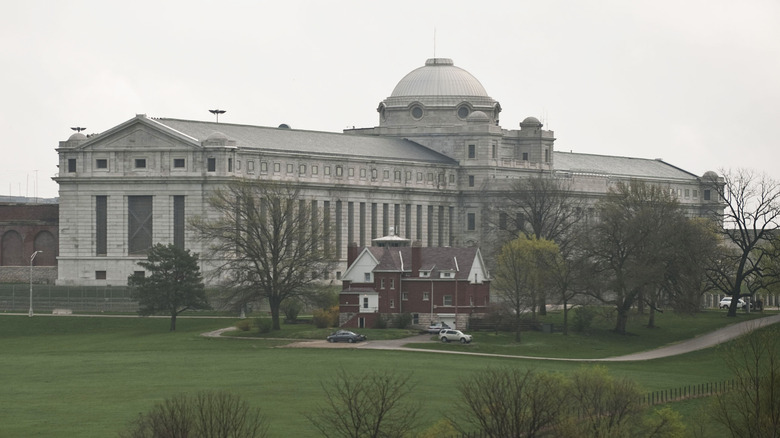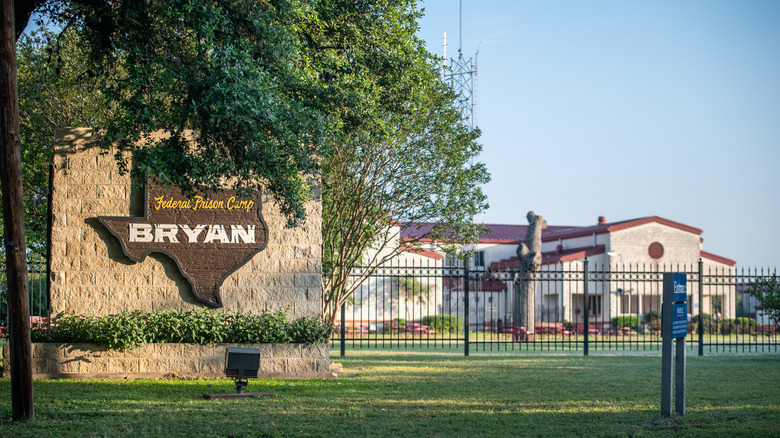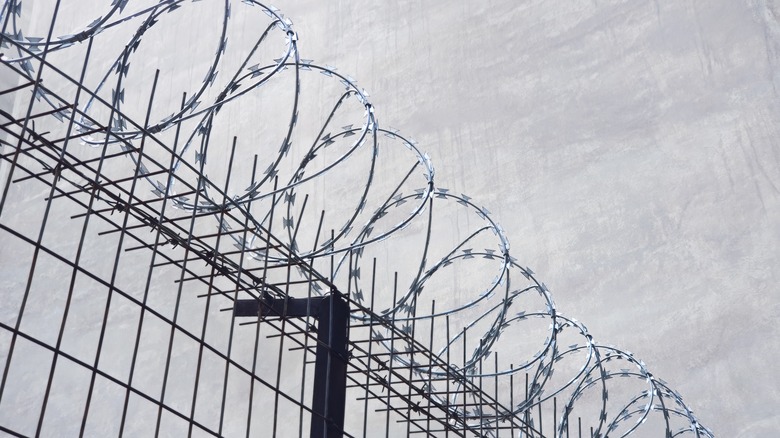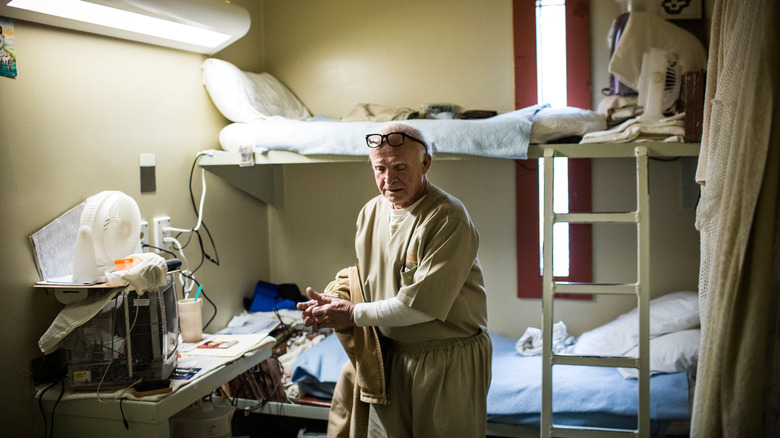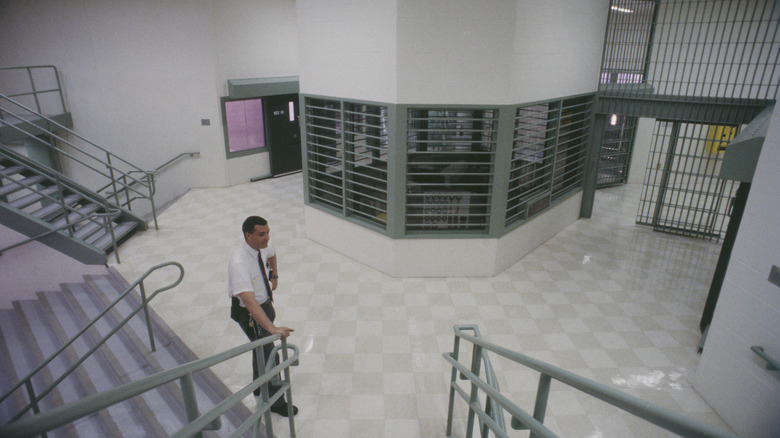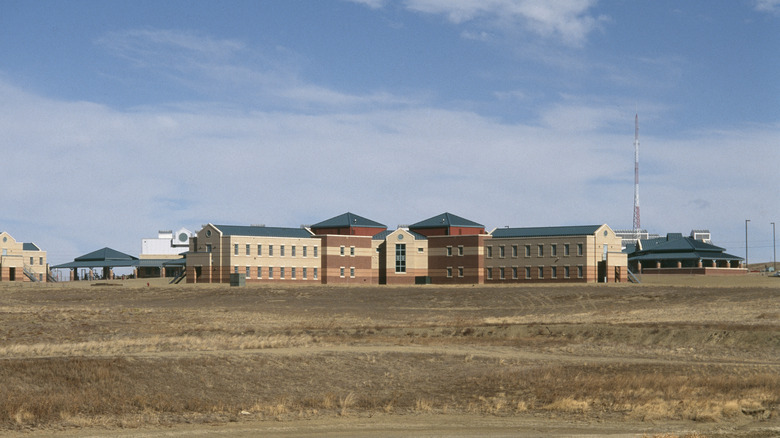These Are The Different Prison Security Levels In The United States
From watching movies, you might think that going to prison invariably means being locked up in a barred cell, perhaps with a cellmate, and surrounded by armed guards, security towers, high walls, and barbed wire. But not every facility run by the Federal Bureau of Prisons — a government agency reporting to the Department of Justice that handles the punishments and rehabilitation of those who have committed a federal crime in the United States — is quite as dramatic as that. In fact, American federal prisons can be broken down into five security categories: minimum, low, medium, and high, as well as a special "administrative" category that has slightly more unique and complex parameters.
The security level of the prison to which a prisoner is sent depends on certain factors including the severity of the crime, the likelihood of the prisoner escaping, and the danger the prisoner would pose to the general public if they did so. Here is what a prisoner can expect of their surroundings in each of the security levels as outlined by the Federal Bureau of Prisons.
Minimum Security
The lowest prison category, "minimum," sounds self-explanatory, but you may find it surprising how unprison-like minimum-security federal prisons — also known as Federal Prison Camps (FPCs) — can be.
According to the Federal Bureau of Prisons, FPCs have a much smaller security staff than higher security institutions, while inmates are housed in buildings described as "dormitories." Typically, there is little to no security infrastructure, such as walls or guard towers, and the fences that do exist may resemble those of a private school, golf club, or estate. With the focus on rehabilitation, those kept at FPCs are encouraged to engage in work and teaching programs.
It is estimated that just under 15% of the BOP's prisoners are kept in minimum security facilities, many on fraud or embezzlement charges that generally do not make them a danger to the public at large. However, some minimum security prisons exist as offshoots of larger higher security facilities.
Low Security
The next step up in the Federal Bureau of Prisons security ladder are the low-security prisons, aka Federal Correctional Institutions (FCIs). On paper, these sound very much like Federal Prison Camps, with dormitory housing and work and learning programs for their inmates; some are also affiliated with larger facilities. However, there are a few key differences — for example, there are more security guards patrolling each facility.
But the most notable difference between minimum and low-security federal prisons is that there are generally two perimeter fences surrounding the facility, reflecting the higher flight risk of some of the inmates. The prison population might include similar white-collar criminals to a minimum security facility, drug offenders, and violent or sexual criminals. However, violence in FCIs is generally low, with violent prisoners punished with transfers to higher security facilities.
Low-security FCIs house the greatest proportion of U.S. federal prison inmates: more than 35%.
Medium Security
Medium security federal prisons — also known as FCIs — are the lowest security facilities that resemble prisons as they are depicted in Hollywood movies. For example, at medium-security FCIs, inmates are housed in cells that reportedly contain bunk beds to house two prisoners and include rudimentary sink and toilet facilities.
Medium-security facilities house all types of prisoners and have greater numbers of security staff than lower-security prisons, whose inmates are generally lower risk. Some prisoners — such as those convicted of sexual crimes — are reportedly treated as "vulnerable" members of the inmate population and are housed in special medium-security facilities to protect them from potential violence at the hands of other inmates.
Medium-security FCIs currently hold around 34% of the prison population, just a few percentage points fewer than the low-security FCIs. Their perimeters are generally stronger, with "electronic detection systems" to prevent inmates from escaping, according to the Federal Bureau of Prisons.
High Security
Known as United States Penitentiaries (USPs), the Federal Bureau of Prison's high-security facilities feature heavily guarded perimeters to minimize the risk of a potential escape. Obviously, some of the worst, most dangerous, and greatest security risk prisoners are housed in high-security facilities.
While lower-security prisons may resemble college campuses and allow prisoners a degree of freedom on-site, USPs limit freedoms as a result of having to deal with highly violent individuals, a majority of whom have also been further penalized for their behavior while incarcerated. There are high levels of violence and abuse against both prisoners and staff, and drug use and gang activity run rampant.
For the most violent and potentially dangerous criminals, there are so-called "supermax" facilities. These severely limit the freedoms of their inmates — who often have a history of attacking prison guards or participating in gang activity behind bars — for the sake of the staff at the facility.
Administrative prisons
As well as minimum, low, medium, and high-security prisons, there are what the Federal Bureau of Prisons describes as "administrative prisons." Supermax prisons, such as ADX Florence (pictured) — which has been described by The New York Times as America's "toughest prison" — fall under this category.
Administrative prisons are facilities that have been designed to fulfill specialist functions, some more obvious than others. For example, facilities such as ADX Florence may specialize in dealing with especially dangerous or troublesome prisoners. But though they might deal with some of the most difficult prisoners in the system, their missions are not all high priority. Administrative prisons might also be responsible for housing prisoners prior to going to trial, or else they may have inmates with disabilities.
As well as ADX (Administrative-Maximum Security Penitentiary) prisons, there are also Metropolitan Detention Centers (MDCs), Federal Detention Centers (FDCs), Federal Medical Centers (FMCs), and more besides.
